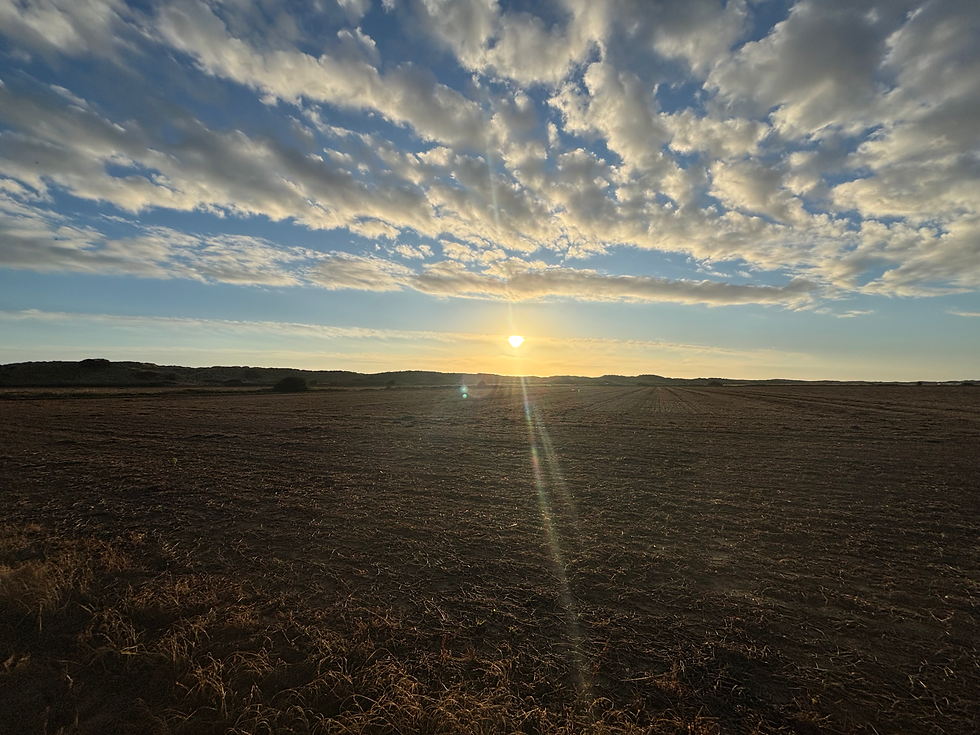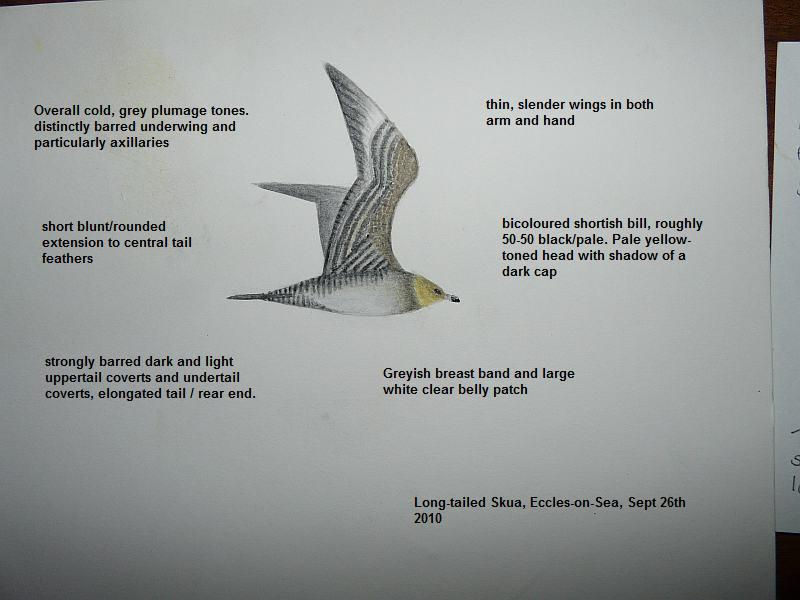Battle Scars!
- tg42lowcarbonbirding
- Aug 29
- 4 min read
Greenish Warbler, Waxham, Aug 27
Trench warfare in World War One is sometimes described as long periods of boredom punctuated by brief periods of intense activity. The stakes are obviously not comparable but that image could serve as a very apt outline of what birding seems to have become. Of course, if a person’s birding is mostly going to see the best birds in the county, then it is no doubt still reasonably enjoyable - while not painting an accurate picture of the state of our bird life. The previous few weeks on the coast here have been dreadful. Mostly hot, mostly settled and with very little to see. The accessible wader habitat has long since dried up, the sea has been woeful with poor numbers and poor diversity compared to 15 years ago, and it’s been a real challenge to keep interested.
I’ve been walking locally in the early mornings and the highlights have been the blackberries and the occasional swim. The birding has been dire. Pied Flycatchers, Wheatears, Willow Warblers, Whinchats and Redstarts etc should be easy to come across but seeing much of anything has been next to impossible. There was a brief period of excitement recently when the wind turned northerly and a few skuas appeared. Nothing to write home about but at least it was something and I enjoyed a few early mornings looking at the sea. It’s great to be out in the lovely morning light and the fresh breeze and it gives you a real tonic. Either side of that short period hasn’t been much fun though.
Today we had some genuine excitement. Andy was out very early in Waxham when he heard the call of a Greenish Warbler. He put a message on our local group and a few minutes later I arrived at the location, identified by Andy’s hurriedly discarded bike in the grass. I couldn’t see him so called out. He couldn’t hear me but the Greenish was giving its Pied Wagtail-like call not too far away. I moved about 30 metres down the track to where Andy was. We moved back to where I thought the call was coming from and listened. When the bird called again, we couldn’t agree on the direction it was coming from, and access to the exact location would be very difficult as there was lots of long grass and reed interspersed with blackthorn and bramble. We decided to use a recording to elicit a response and locate the bird a little better. There was a good response to the recording but again it was very tricky to pinpoint the bird. Amazingly, there were several Chiffchaffs in the area flitting from bush to bush and most were infuriatingly hard to see at times. We spent the next 15 minutes hearing the bird occasionally but couldn't get a sighting.
We then decided to try and approach the bird more closely. Andy only had sandals on and I had shorts on so it wasn’t going to be the easiest task… we waded through the grass and reed towards the bushes where the birds were located. We played a few calls and managed to narrow down the area where we thought the bird was. Suddenly, a small phylloscopus warbler flew in from a short distance away, flashing some white as it did. I managed to get on it quickly and said “I think this is it!”. I watched it for a few seconds as it moved across the front of the bushes and Andy got onto it too.
It was clearly a small phylloscopus warbler with lovely silky white underparts. The upperparts had that greeny tone with a bit of a grey cast of a Greenish. It was also, however, behaving like the previous Greenish Warblers we’ve found here – very active, hard to locate and hard to follow as it moved through the branches and leaves. There was a single wing bar present on the bird’s right wing (I never saw the left wing!) and a strong head pattern, and although I didn’t see the leg colour as it flitted around, Andy noted them as paler than on a Chiffchaff. We mused about how we’d be sure it was a Greenish and not an Arctic on the views we’d had and Andy (who’s a fair bit sharper than me in the field) thought it perhaps lacked the bulk of an Arctic and its head shape / feel was more Greenish. Thankfully, the call made it a lot easier!
Having to carve a path through the vegetation resulted in my legs being covered in scratches from brambles and I also got several nettle stings as we battled through. As I was the only one with proper footwear on, I had to go first and get through the brambles! Didn’t really notice at the time due to the excitement of the situation but for the rest of the day my legs were annoyingly itchy.

The bird flipped up over the tops of the bushes and may have flown north. We didn’t see it again and no more calls were heard. We let a few people know and left to have a look at a couple of other spots. All the Greenish we’ve found here (4 birds) have been difficult. All have been one-day birds, none have lingered much more than a couple of hours and all have been tricky to observe. Again, it’s a lot of effort for a short but intense period of excitement.
It looks like the next few days are going to be a case of ‘back to normal’, with little activity and not a lot to see. As declines continue and birds become less common, these short periods of activity are to be enjoyed as much as possible. Even the occasional 'good' bird seems like little compensation for the effort, and regularly experiencing the parlous state of our birdlife isn't great for the wellbeing of anyone who's experienced better times. Thankfully, away from birding I have several other interests to keep me going and have been indulging more in some of those this year. I’m beginning to think that in the next few years the balance is going to keep shifting towards the other things I enjoy and away from birding - apart from when the conditions are suitable and there are birds to enjoy. Like we used to say at football training - "play as long as you can and enjoy it because you're a long time stopped."




Comments